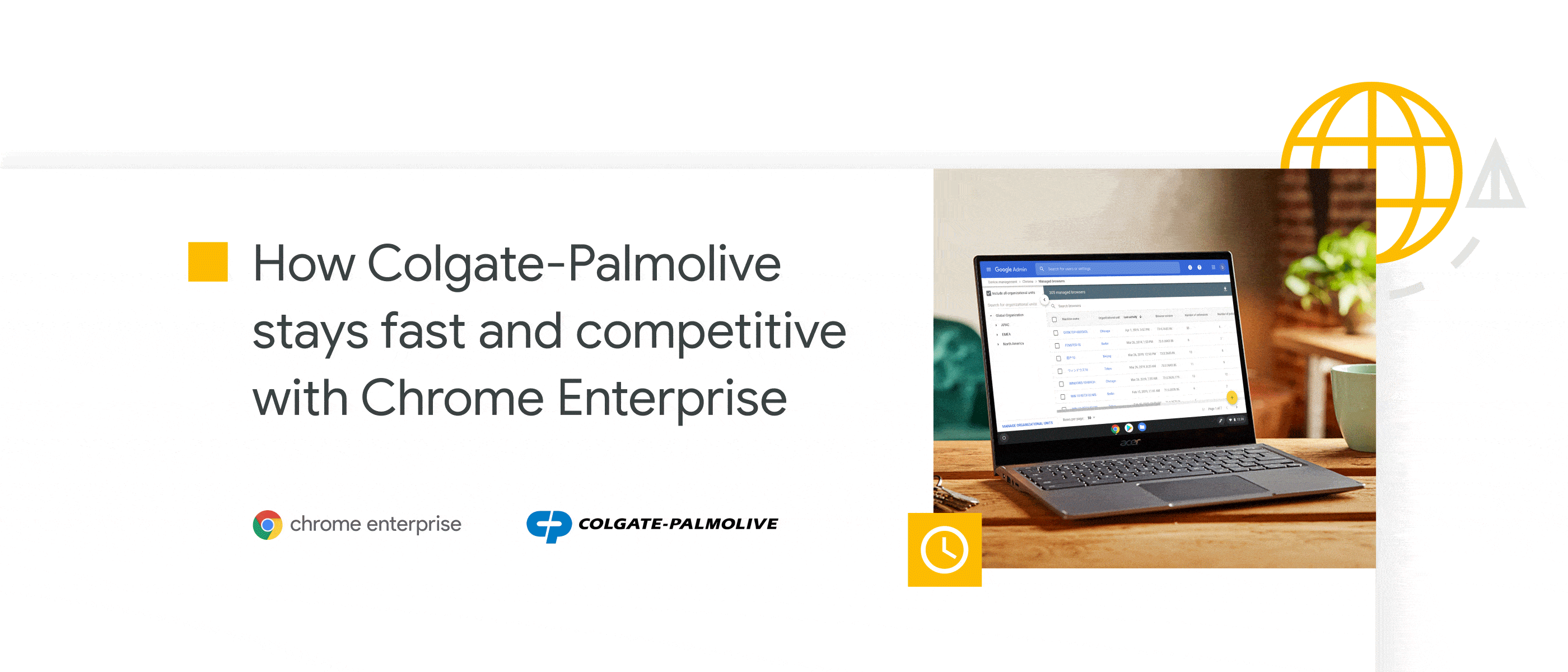4 Chrome Enterprise updates you might have missed in 2019
Cyrus Mistry
Group Product Manager, Chrome Enterprise
Here are four key Chrome Enterprise updates you might have missed.
Try Google Workspace at No Cost
Get a business email, all the storage you need, video conferencing, and more.
SIGN UPAs a growing number of IT leaders invest in their frontline workforce by providing cloud-based tools like Chrome Enterprise, more employees are collaborating with ease and speed to better support customers. It’s been an exciting year for Chrome Enterprise with big announcements aimed at making the modern OS more accessible to every business. Read on for four key Chrome Enterprise updates you might have missed.
1. We enhanced the business capabilities of the Google Admin console.
In August, we announced a major redesign of the Google Admin console, a central, cloud-native suite for IT to manage Chromebooks and Chrome Browser (building off the introduction of Chrome Browser Cloud Management in April). The re-engineered Admin console loads pages up to 10X faster.1
New Admin console capabilities include:
Built-in search, which lets you search directly for organizational units nested deeply in the hierarchy, filter out inherited settings, and find devices by serial number, recent user, sync time, and auto-update expiration.
Unified app management, which allows you to manage Android, Chrome, and web apps side-by-side in a single interface.
Additional policies, to control the complete user experience, such as Chrome Safe Browsing, Password Alert, and quick unlock with PIN and fingerprint.
Device fleet oversite features, such as remote screenshot, log capture, and reboot completely in the background.
2. We partnered with OEMS to give you more enterprise device options.
In August, we shared news of the first Chromebook Enterprise devices—Dell Latitude 5400 and Dell Latitude 5300 2-in-1 Chromebook Enterprise. Since then, Acer, Google, and HP have announced Chromebook Enterprise devices, too.
What’s great about Chromebook Enterprise devices like these is that they combine the user benefits of Chromebooks with the business capabilities of Chrome OS. This gives IT the ability to empower employees to work securely and effectively from anywhere. Businesses already using Chromebooks can gain the same capabilities by adding Chrome Enterprise Upgrade to their devices—check out this article to learn how to get started.
Benefits of upgraded devices include:
Advanced security to keep corporate data safe. If an employee misplaces a Chromebook, IT can easily disable the device, protecting data from potential bad actors.
Simplified orchestration of the organization’s Chrome device fleet, with access to device policies and fleet oversight capabilities from an easy-to-use, cloud-based Google Admin console or a third-party UEM solution.
Flexible access to resources regardless of identity type. Integrate with Active Directory and SAML SSO providers or enable shared device use cases with managed guest sessions or kiosk mode.
24/7 support so IT administrators can call Google if any issues come up, at no additional cost.
“As a global organization, having Chromebook Enterprise availability in 50+ countries is really important. The ability to have devices delivered straight from the factory pre-enrolled into our domain enables users to login and get to work on their own.” - Scott Gardiner, Group End User Computing Manager, Rentokil
3. We updated Chrome Browser Benchmark recommendations.
The Center for Internet Security (CIS) Chrome Browser benchmark has become a trusted resource for enterprise customers, providing guidance on which policies to configure to make Chrome Browser more secure and compliant for their environment (Companies can select from more than 300 policies). In June, we introduced the CIS Benchmark 2.0 for Google Chrome Browser, an updated benchmark that you can utilize to configure your browser to meet the security, privacy and productivity needs of your organization. The updated benchmark contains five sections:
Enforce Defaults: Recommends default security configurations for Chrome Browser that can be enforced by policy to avoid employees changing them. Also, it ensures that previous admins haven’t mistakenly set them to non-default or less safe configurations.
Attack Surface Reduction: Details how to disable web features that may be unnecessary in your enterprise environment.
Privacy: Dives into suggestions for improving user privacy.
Management/Visibility/Performance: Recommends how to manage and control remote access to your browser.
Data Loss Prevention (DLP): Offers settings to control how data is synced and where data is sent in order to prevent data loss.
4. We celebrated our customers who support their customers.
We never tire of hearing from IT leaders about how they’re transforming their organizations with help from the cloud. Here are just a few of the stories we’ve heard this year:
Blue Cross Blue Shield of North Carolina: increasing security and productivity with Chrome Browser, while having to configure only six out of 1,200 applications (All with help from Legacy Browser Support).
Panda Restaurant Group: making it easier for employees to receive training by providing a Chrome device dedicated to training at each location.
Hunterdon Healthcare: providing caregivers with secure access to critical healthcare apps via low-maintenance devices that run Chrome Enterprise and G Suite.
Japan’s GABA language schools: making it easier for its instructors to teach English lessons with reliable Chrome devices.
Pet food manufacturer NomNomNow equipped workers at every stage of the process, from the kitchen to shipping.
Read more Chrome Enterprise customer stories on our website.
More to come
We’re looking forward to bringing you even more ways to better support your users and to transform your organizations with the help of cloud. Learn more about Chrome Enterprise on our website.
1: Source: Internal tests completed by Google engineering



